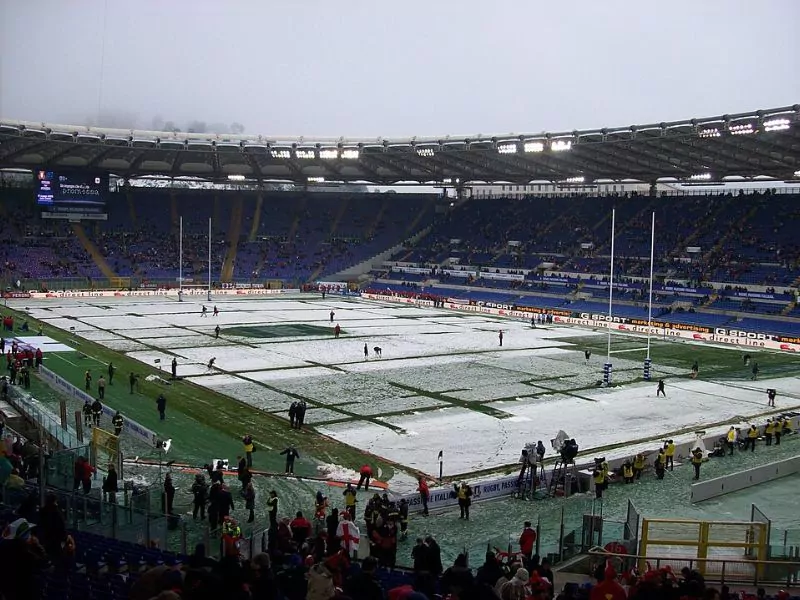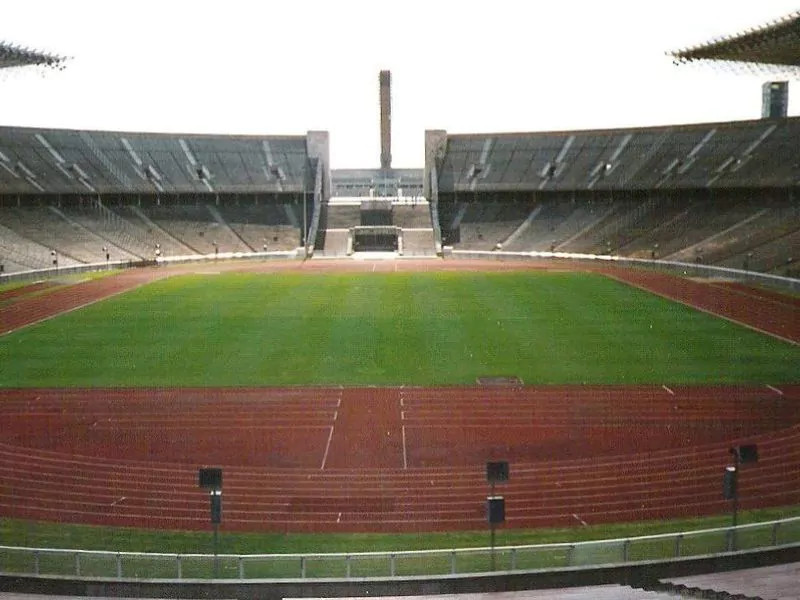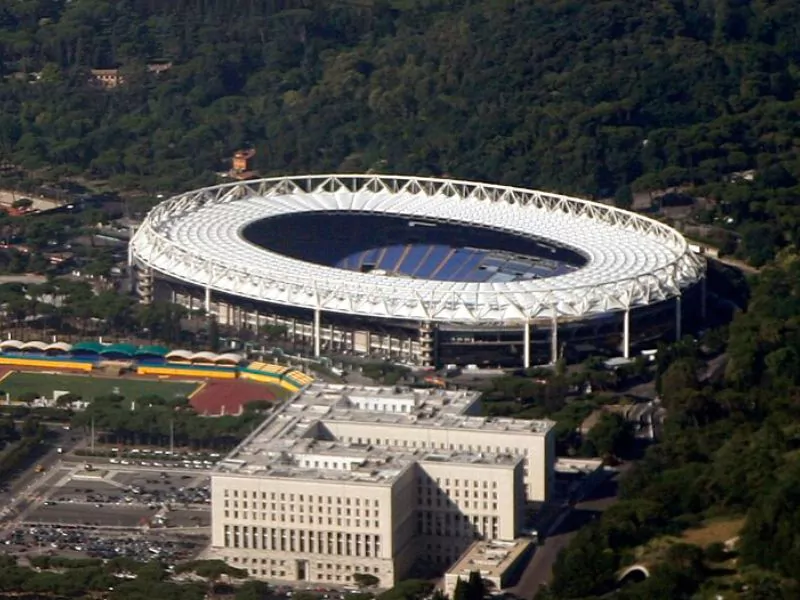Structural Overhaul for the Modern Game
By the late 1980s, Rome’s Stadio Olimpico required substantial upgrades to align with FIFA’s evolving technical standards and the demands of a rapidly modernising, television-driven era. As Italy prepared to host the 1990 FIFA World Cup, it became evident that the nation’s flagship stadium needed more than minor adjustments—it required a structural transformation.
In response, Italian authorities approved a sweeping plan of the renovation of Stadio Olimpico that would reimagine the stadium’s architecture and infrastructure from the ground up. The renocation involved dismantling large sections of the original structure, particularly the upper tiers and portions of the lateral stands, which were no longer adequate in terms of visibility, safety, and media functionality.
The aim was not only to enhance sightlines, acoustics, and spectator comfort, but also to integrate new technologies and spatial arrangements suited to international broadcast standards.
The updated design prioritised an all-seater configuration, steeper viewing angles, and improved facilities for teams, press, and fans alike. The result was a re-engineered stadium, capable of hosting the world’s most prestigious matches in a setting that met the technical and experiential expectations of the modern football era.
Prefabricated Construction and New Seating Geometry after the renovation of Stadio Olimpico

A key feature of the renovation of stadio olimpico was the use of prefabricated concrete components to speed up construction and improve precision. These elements allowed for reconfiguration of the seating tiers, bringing spectators closer to the action and creating a more immersive viewing experience. The rebuilt stands reshaped the internal bowl of the stadium, giving it steeper angles and tighter proximity to the pitch.
The Addition of a Landmark Roof Structure
To protect spectators and improve acoustics, a new roof structure was introduced, supported by a network of steel cables and covered with PTFE (Teflon)-coated fibreglass membranes. This translucent material reduced glare for television broadcasts and provided partial shelter across most seating areas, excluding parts of the Curva Nord. Spanning approximately 300 metres in diameter and covering more than 42,000 square meters, the roof quickly became a defining architectural element of the stadium.
Hosting the 1990 FIFA World Cup

Stadio Olimpico played a central role in the 1990 FIFA World Cup, hosting six matches including the opening game and the final. Italy’s national team played three group stage matches at the stadium, defeating Austria, the United States, and Czechoslovakia. In the knockout phase, Italy also overcame Uruguay and the Republic of Ireland in Rome before being eliminated in the semi-finals in Naples. The final, held on 8 July 1990, saw West Germany defeat Argentina 1–0 in front of 73,603 spectators, with Andreas Brehme scoring the decisive penalty in the 85th minute.
Visual and Acoustic Improvements
Players and spectators praised the enhancements brought by the renovation of Stadio Olimpico. The steeper seating configuration allowed for clearer views from all areas of the stadium, while the roof structure contributed to a more resonant, unified crowd atmosphere. These changes helped modernise the fan experience and contributed to the stadium’s selection for future major tournaments.
Long-Term Legacy and Cultural Impact

The successful completion of the renovation of Stadio Olimpico place as one of Europe’s elite football venues. In addition to the 1990 World Cup, the stadium has since hosted multiple UEFA Champions League finals and served as a key site during the UEFA Euro tournaments. The roof and upgraded infrastructure demonstrated how thoughtful architectural innovation could merge modern functionality with historical continuity.
Conclusion
The Italia ’90 renovation of Stadio Olimpico remains a milestone in Italian sports architecture. The project addressed critical structural and functional needs, positioning the stadium to host globally significant events. Through its advanced engineering, distinctive roof, and improved spectator experience, the refurbished stadium set a standard for future renovations in Italy and beyond. More than three decades later, it continues to serve as a multi-use venue and cultural landmark for the city of Rome.
